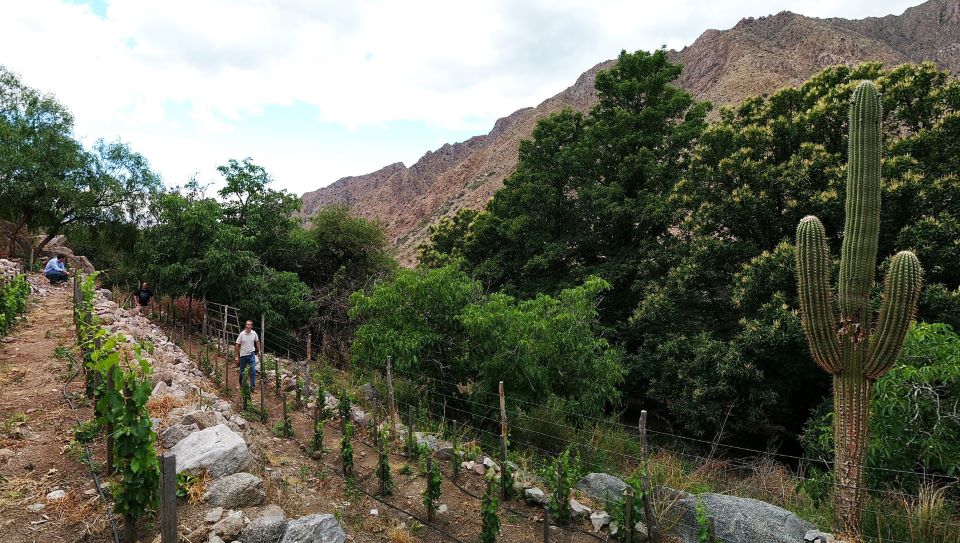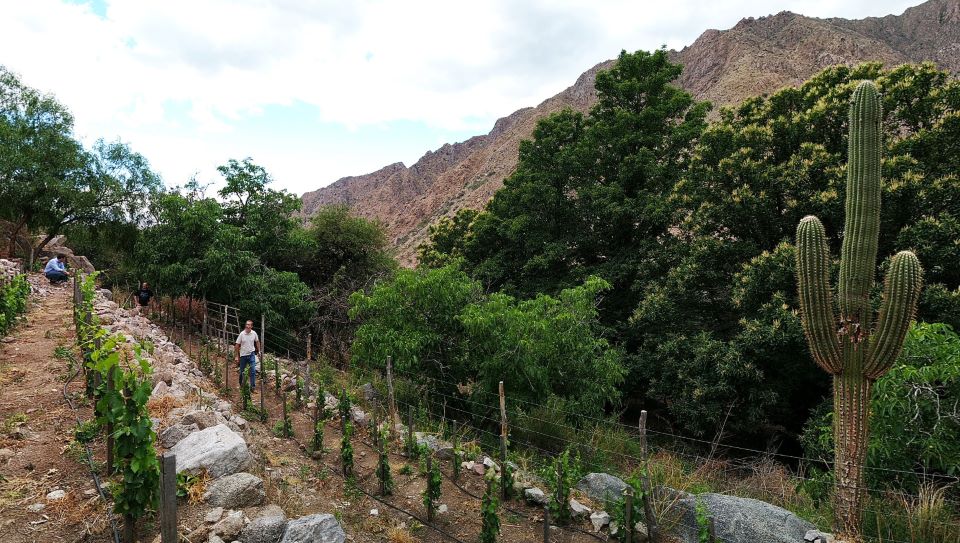Browse using the new Vinous website now. Launch →
Printed by, and for the sole use of . All rights reserved © 2015 Vinous Media
Argentina: Where Extremes Offer Up Unexpected Surprises
BY JOAQUÍN HIDALGO | FEBRUARY 20, 2024
In a country the size of Argentina—comparable in land area to the entirety of Western Europe—there are many territories with favorable climate and soil types for making wine. However, Mendoza’s lion's share of Argentine grape production means the province tends to define consumer expectations of the profiles of wines from Argentina as a whole. But what happens when one ventures into lesser-known corners of the country? Then, it becomes a tale of the unexpected.

A postcard from the interior ravines within the Calchaquí Valley. At over 2,000 meters above sea level, vineyards coexist with very cool nights and tropical sunshine in an environment reminiscent of colonial times.
This review features a number of notable rarities. It is a story of extremes. There’s a Malbec grown on the Tropic of Capricorn at the astonishing elevation of 11,800 feet, and several Pinot Noirs from the most southerly vineyards in the world, planted in the Patagonian steppes at a latitude of 45° 30’. Between them is a distance, the equivalent of that from the US’s northern border with Canada to the southern border with Mexico.
Viable vine growth and wine production in these extremes are only made possible by carefully balanced equations of elevation and latitude. I tasted 240 wines from Argentina for this report, from everywhere other than Mendoza. This includes geographies as different as the forested sierras of the center of the country, coastal, ocean-adjacent sites and others from the northern Andes and the southern steppes. The result is a vast and fascinating spectrum of styles—delicious in many cases and not quite up to the mark in others.
First, it would be wise to get our bearings.
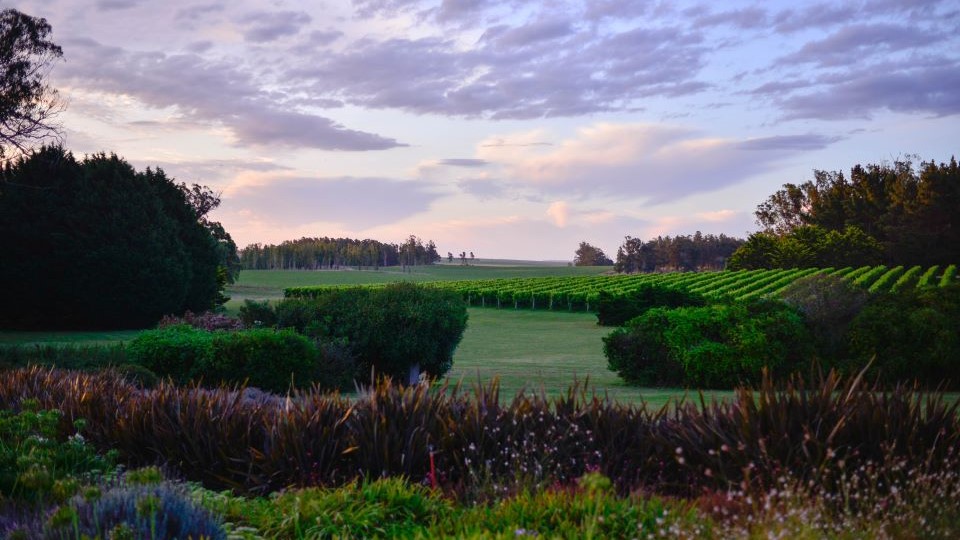
The golden hour over the Trapiche Costa y Pampa vineyards in Chapadmalal, Buenos Aires province, in the Humid Pampa, 6 kilometers away from the Atlantic Ocean shore. The dominant note is the green of the fields.
The Northern Valleys
Northern wine country in Argentina is comprised of a series of connected valleys. Vineyards start at 4,900 feet above sea level and rise in some places to heights of 12,000 feet and even higher near the Tropic of Capricorn. The elevation would be just an interesting factoid, were it not the main reason behind more moderate temperatures—the key to allowing vines to grow. At these extreme heights, thermal accumulation in the harsh Andean sun makes it possible for grapes with short and medium ripening cycles to mature. These are desert areas, sunny and freezing, where vines develop in a state of extreme environmental stress. As we know, when vines are pushed to the limit, they impart distinctive flavors.
The Northern Valleys have musical names like Calchaquí (which spans the provinces of Catamarca, Salta and Tucuman), Quebrada de Humahuaca (located in the province of Jujuy) and Pomán (in Catamarca). Here, the influence of pre-Colombian cultures is still tangible and vibrant, especially in the local textiles and folklore. Wine came to these ravines in the middle of the 17th century with the Spanish conquest and never left. Every remote home in these areas has a fig tree and vines planted in the garden, with the latter almost always being the Criolla variety, with which locals make a rough homemade brew. Some producers, however, have learned to get the best out of Criolla, as is true of the 2021 Sunal Ilógico Criolla or 2022 Bodega Kindgard Criolla Quebradeña Sacha Tigre, whose grapes come from old, long-forgotten vines.
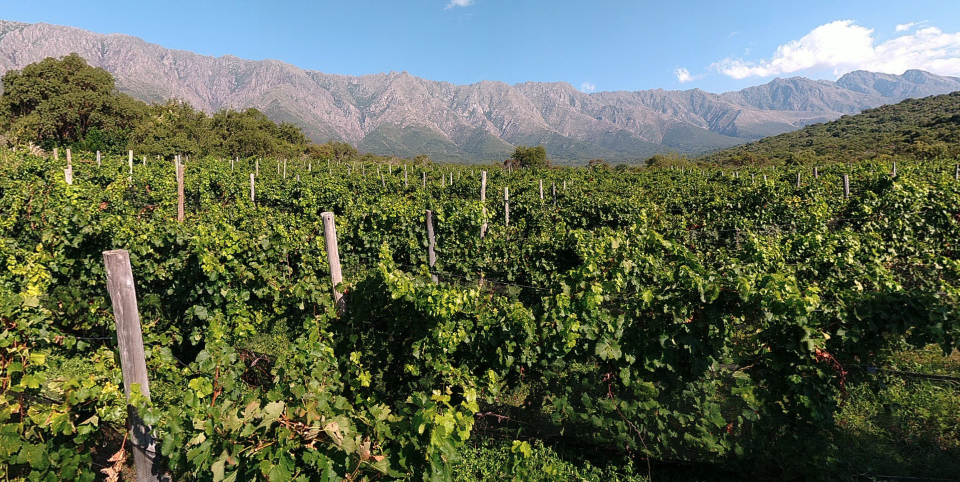
One of the most picturesque vineyards in Traslasierra, Córdoba, in the geographical heart of Argentina, belongs to Achala Wines. The Sierras Altas (seen in the background) are an ancient formation that contributes weathered granite and gneiss with calcareous veins to soil formation. As seen in the picture, the vineyard coexists with the spiny native forest.
The landscape up north is otherworldly. The mountain slopes are packed with large cardon cacti and pre-Colombian terraces that prove perfect for wine growing. While the Calchaquí Valley was the biggest center of wine production throughout the 20th century (with 10,362 acres under vine), the Quebrada de Humahuaca, which rises up into Bolivia, is where a few investors have been developing vineyards, with new plantings currently spanning about 148 acres.
But it’s still the Calchaquí Valley that sets the tone. Wherever water is available, you’ll find vines. In the Province of Salta, Cafayate is the epicenter and hosts most of the traditional wineries, from Etchart to Domingo Hermanos and El Esteco. A quiet town where one can spend a pleasant afternoon in the shade drinking potent wines accompanied by empanadas or roasted goat, it has the best range of hotels in the region. Cachi is another lovely destination, more colonial in style and higher in elevation. Between them, the Calchaquí River winds along an 80-mile stretch (a four-hour drive by car due to the twisty roads), passing different towns and vineyards.
Planted on ancient pre-Columbian terraces, El Esteco’s La Turbina vineyard, on the outskirts of Cafayate, is unique. Located at over 2,000 meters with a south-facing exposure, it is a cool place where Garnacha reaches rare tones.
The Cabernet Sauvignons of the Calchaquí Valley offer power and a distinctive aroma of roasted red pepper, reminiscent of the region’s dark, spiced, chutney-inflected Malbecs and perfumed whites made from Torrontés (a native grape related to Muscat). Some of the most interesting wines in this report, such as the 2021 Colomé Cabernet Sauvignon 1831, the 2020 El Esteco Cabernet Sauvignon Finca Notables and the 2020 Almacén de la Quebrada Malbec Pucará, come from the Calchaquí Valley.
In Humahuaca, it’s higher and colder, and the wines are more reminiscent of the Northern Rhône Valley, featuring exotic Syrahs and Cabernet Francs. As it’s a new region, the wines are interesting but not yet as consistent. Standouts include the 2021 Finca Benavidas Sirviñacu and the 2021 Huichaira Vineyards Cielo Arriba. A journey through the thinner air of these high-altitude lands can wear on the body, but they offer up some of the most stunning vistas in the world. Tasting these wines takes one into a new topography of flavors, the intensity of which comes from the sun, while the juicy freshness of some can be attributed to the high elevation. A very brief harvest window is critical if one wants to achieve a fruity profile in these extreme regions. Some producers err on the side of over-ripeness to avoid green flavors. The best wines, however, including those mentioned above, take a more refined approach.

In the freezing month of August, the Otronia vineyards in the Chubut steppe endure winds of over 100 kilometers per hour, so they are planted with poplar curtains (as many as vines). In summer, the day extends to 16 hours of sunlight, and frosts in the middle of January are not uncommon.
San Juan
Part of the Cuyo region alongside Mendoza, San Juan is a significant wine-producing province by volume. With around 101,230 acres of vineyard land, it makes its mark on the national statistics, especially in terms of wines meant to be consumed the same year, which the region’s producers ship in the Southern winter, not long after harvest.
In San Juan, there are two valleys of interest when it comes to quality wines: Pedernal, which lies in the Andean foothills and has about 1,977 acres of vineyard at a height of about 4,600 feet, and Calingasta, at the foot of the Frontal Cordillera range (where peaks rise as high as 19,500 feet). The Pedernal Valley boasts pure calcareous soils and produces wines of intensity with a chalky texture, such as the 2019 Pyros Malbec Vineyard Block Nº4 and the 2021 Finca Las Moras Malbec Demencial. The Calingasta Valley, at a height of 5,200 feet, has a cool solar profile, resulting in wines with intense juiciness, such as the 2021 Los Dragones Malbec Maida and the 2022 Bodegas Del Carmen Malbec Nido del Tigre.
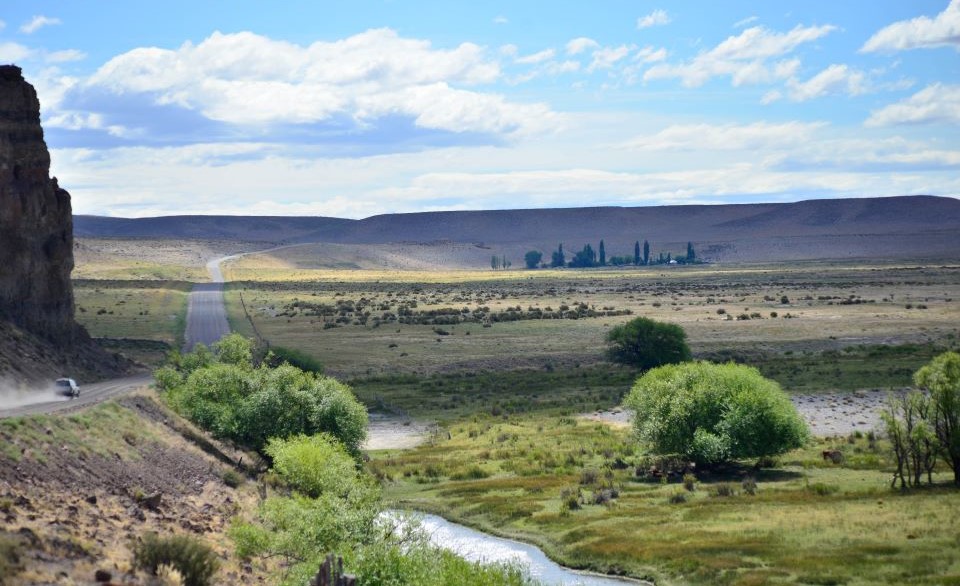
The Chubut River originates in the Andes and winds its way through the steppe. The photo is from the summer of 2023, depicting the volcanic and meandering landscape, with hills sculpted by the wind. Viticulture is still in its early stages in these valleys.
The Valleys of Patagonia
In the far south of Argentina, Patagonia offers vineyards at a lower altitude, located between the 39th and 45th parallels. To understand what we mean when we talk about Patagonia, it’s worth keeping in mind that the region accounts for one-third of the country’s surface area, with a mountain range to the west (much lower than the rest of the Andes), forests, glaciers, lakes and a vast desert steppe traversed by large rivers. The biggest of these, the Río Negro, is also where the highest density of vineyards can be found.
This area is home to about 7,923 acres of vineyard land. Because of its latitude, long-ripening varieties are pushed right to the limit, while those with medium cycles are in their element; Cabernet Sauvignon doesn’t always ripen well, but Merlot, Pinot Noir and Malbec get there without any trouble. White varieties such as Chardonnay and Sémillon also present distinctive profiles.
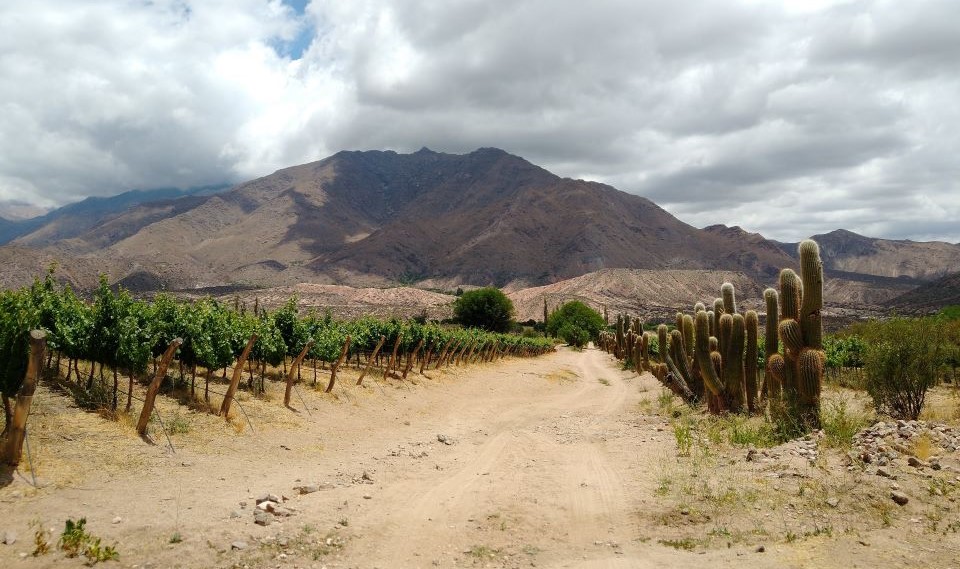
At 2,500 meters above sea level in the Andean valleys, vines thrive in extreme conditions. If nature created “cardones” (the cacti in the photo) as a plant adapted to the area, it's clear that the vine bears fruit in the midst of environmental stress, defining the Vallisto character in the region.
To understand why the wines of Northern Patagonia—the area spanned by the provinces of Neuquén, Río Negro and La Pampa—are distinctive, one needs to look at the clay soils created by the rivers, the long hours of sun in summer and the windy climate. The grapes mature slowly in these conditions, developing thick skins that allow for more precise ripening windows. In this area, red fruit character is the norm amongst the red varieties, with balanced acidity and fine, reactive tannins. Good examples of these river-influenced wines include the 2021 Noemía Malbec, the 2022 Familia Schroeder Saurus Barrel Fermented Malbec, the 2022 Chacra Pinot Noir Treinta y Dos and the 2020 Red Blend from Ribera del Cuarzo.
Further south, however, in the province of Chubut, one finds a more restrictive landscape. With just 198 acres of vines planted between the 42nd and 45th parallels, small producers are trying their luck with Pinot Noir and Chardonnay. This is a realm of skeletal, acidic wines with an austere character, among which Contra Corriente, almost on the Chilean border, stands out. The exception is Otronia, the most southerly winery and vineyard in the world (to date), which operates on a larger scale, boasting 123 of the aforementioned 198 acres under vine in a freezing desert landscape. A notable red from the Patagonian forests is the 2020 Contra Corriente Pinot Noir, while one from the steppes is the 2021 Otronia Pinot Noir 45º Rugientes.
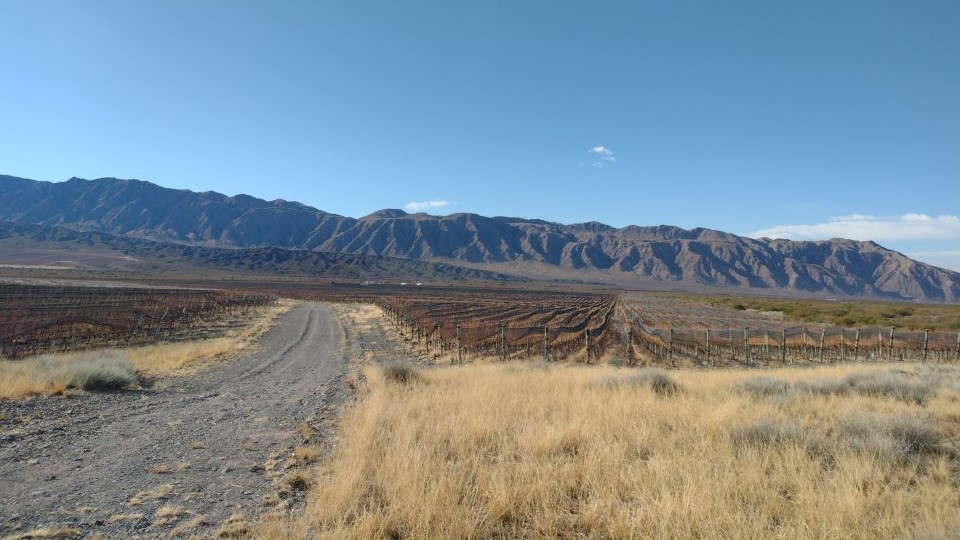
The Pedernal Valley, located in the San Juan Precordillera at 1,400 meters, is one of the lesser-known gems of the region. The Pedernal range, seen in the background, is formed by calcareous rocks that give the soil a unique character among Argentina's vineyards. The photo was taken in winter 2022.
Other Pockets in the Landscape
Among other emerging regions, two stand out right now. On the one hand, Córdoba, in the heart of Argentina, accounts for 604 acres. Located in a Sierra landscape that offers height and unusual soils for Argentina, it rests in the middle of a countryside where rainfall supports native forests of thorny trees. Here, a few producers are growing vines with a focus on red varieties. Notable wineries include Traslasierra Achala Bodega Exótica, whose vineyard is populated with native trees such as Molle and Piquilline. The 2021 Blend Valle de Traslasierra is an excellent expression of the territory.
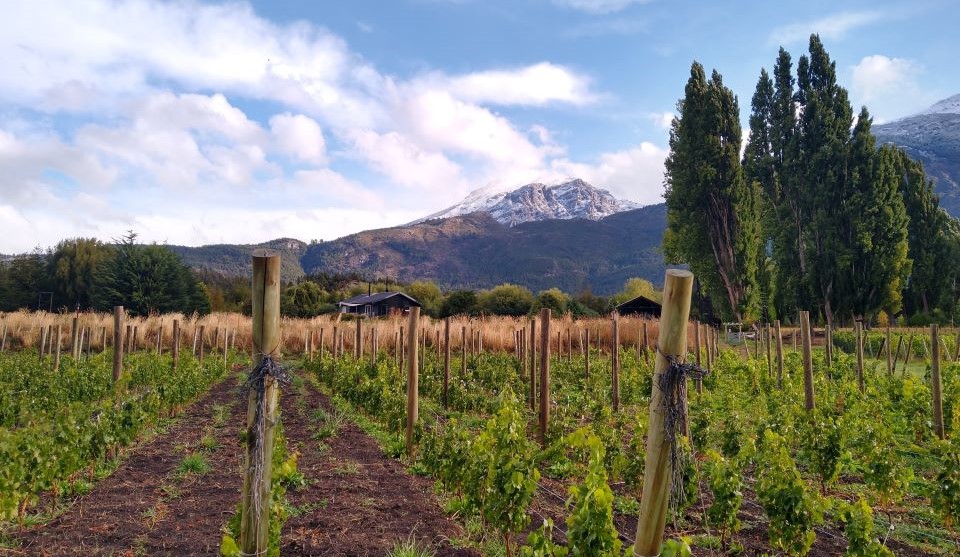
The Futaleufú River Valley, on the border with Chile, offers a handful of vineyards planted in the green Patagonia. It is a cold area, at the limit of grape cultivation. The photo was actually taken in March 2021 after a snowfall in the mountains.
On the other side of the country, one finds oceanic vineyards planted to the south of the province of Buenos Aires and to the east of the provinces of Río Negro and Chubut. This year, I tried some wines from Balcarce and Chapadmalal, but there are plenty more pockets of vineyards in a strip about 70 miles from the sea. The Buenos Aires coast is a windy area that can receive more than three feet of rain per year, while the Atlantic Ocean ensures a cool-to-cold climate. This means that white wines reign. Chardonnay, Sauvignon Blanc and Albariño from here are all vibrant, with a different character than one finds in the Andes. For instance, the 2022 Puerta del Abra Albariño Insólito is a very tasty glass of white. However, it’s the reds that present the most daring profiles; very much worth trying are the 2022 Trapiche Pinot Noir Costa y Pampa, the 2022 Wapisa Malbec and the 2020 Puerta del Abra Cabernet Franc, each of which offers unusual profiles for Argentina.
Not all of these regions’ wines are widely available in the US market and elsewhere, often because production is low or because importers haven’t yet grown adventurous enough. Whatever the truth, one thing is certain: if you’ve ever been tempted to venture into the extremes of South America, these bottles will give you a push in the right direction. At the end of the day, travel is about expecting the unexpected.
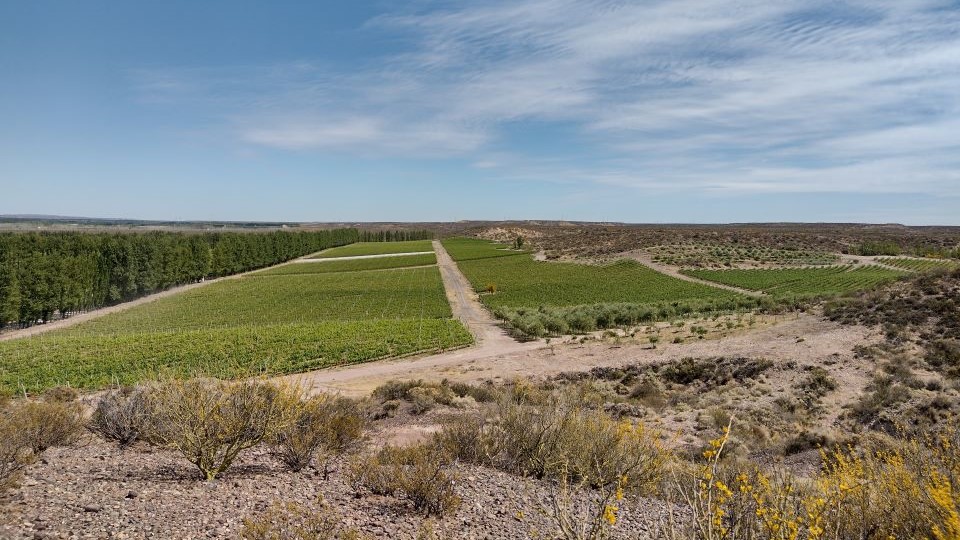
In San Patricio del Chañar, Neuquén, the vines climb the “Barda” (the slopes riverbank as it is called here) of the Neuquén River. This way, as seen in this vineyard of Familia Schroeder, they explore from clay soils at the bottom to calcareous gravels like those in the area adjacent to the desert.
All the wines reviewed in this report were tasted in November 2023 in Buenos Aires.
© 2024, Vinous. No portion of this article may be copied, shared or re-distributed without prior consent from Vinous. Doing so is not only a violation of our copyright, but also threatens the survival of independent wine criticism.
You Might Also Enjoy
The Uco Valley: Where Diverse Terroirs Work Their Magic, Joaquín Hidalgo, September 2023
The Age of Mountain Whites: Enjoying the Altitude, Joaquín Hidalgo, July 2023
The 2023 Harvest in Argentina: Throwing Out the Playbook, Joaquín Hidalgo, May 2023
Luján de Cuyo: Old Vines and a Patchwork of Soils, Joaquín Hidalgo, January 2023
Argentina: Donde los Extremos Ofrecen las Inesperadas Sorpresas
JOAQUÍN HIDALGO | 20 FEBRERO 2024
En un país de la escala geográfica de la Argentina –comparable a Europa occidental– existen muchos rincones con potencial clima y suelos para hacer vinos. Mendoza, sin embargo, da cuenta del 70% de la superficie del país y por su gravitación define el perfil de la mayoría de los vinos de Argentina. ¿Pero qué pasa cuando uno se aventura a otros rincones menos conocidos? Ahí es cuando se abre la caja de lo inesperado. Y eso es exactamente lo que sucede con este reporte.

Una postal de las quebradas interiores dentro del Valle Calchaquí: a más de 2000 metros sobre el nivel del mar las vides conviven con noches muy frescas y un sol tropical en un entorno con reminiscencias coloniales.
En este review conviven algunas rarezas dignas de mención. Como en todo lo que toca extremos, aquí hay Malbec cuyas uvas fueron cultivadas a la increíble altura de 3600 metros en el Trópico de Capricornio y algunos Pinot Noir que vienen de los viñedos más australes del mundo, plantados en plena estepa patagónica, en una latitud tan alta como 45º 30’. Entre ellos media una distancia tal como la que hay entre la frontera de Estados Unidos con Canadá y el borde con México por el Sur.
Esa extensión es sólo posible por una compensación entre alturas y latitudes que arrojan una cuenta viable para la vid. De eso se trata este reporte. Para armarlo probé unos 240 vinos de otros rincones de Argentina. Eso incluye geografías tan disímiles como las sierras boscosas del centro, los viñedos oceánicos y los que provienen de la cordillera en el Norte y de la estepa austral. El resultado es un compendio estilístico tan amplio como fascinante, deliciosos en muchos casos y en otros con vinos que pueden no dar la talla.
Para organizarlo, despleguemos el mapa por los puntos fuertes.

The Golden hour sobre los viñedos de Trapiche Costa y Pampa en Chapadmalal, provincia de Buenos Aires, en la Pampa Húmeda y a 6 kilómetros del Océano Atlántico. La nota dominante es el verde de los campos.
Los Valles del Norte
El norte del vino en Argentina está formado por una serie de valles concatenados. Parten desde los 1500 metros sobre el nivel del mar y llega a algunos rincones en los que la vid trepa hasta los 4000 y más en el Trópico. La altura sería un dato de color si no fuera el principal modificador de las temperaturas y la llave que permite abrir los límites de cultivo. A esas alturas extremas la suma térmica alcanza para madurar uvas de ciclo medio y corto, bajo el sol abrasador de Los Andes. Son lugares desérticos, solares y helados, donde la vid crece en un estado extremo de estrés ambiental. Y se sabe: donde quiera que la vid esté al límite, ofrece sabores diferentes.
De eso se tratan los valles del Norte, con algunos nombres tan sonoros como el Valle Calchaquí (cruza las provincias de Catamarca, Salta y Tucumán), la Quebrada de Humahuaca (en la provincia de Jujuy) o el Valle de Pomán (en la de Catamarca). Allí el mudo precolombino vibra en tejidos y da vida al folclore local. El vino llegó a estas quebradas a mediados del siglo XVII con la conquista española y nunca más se fue. En los patios de las solitarias casas vallistas nunca falta la higuera y algunas vides, casi siempre Criolla, de la que se elaboran vinos peleones. Algunos productores, sin embargo, le sacan partido, como sucede con Sunal Criolla 2021 o con Bodega Kindgard Criolla Quebradeña Sacha Tigre 2022, cuyas uvas provienen de parrones olvidados.
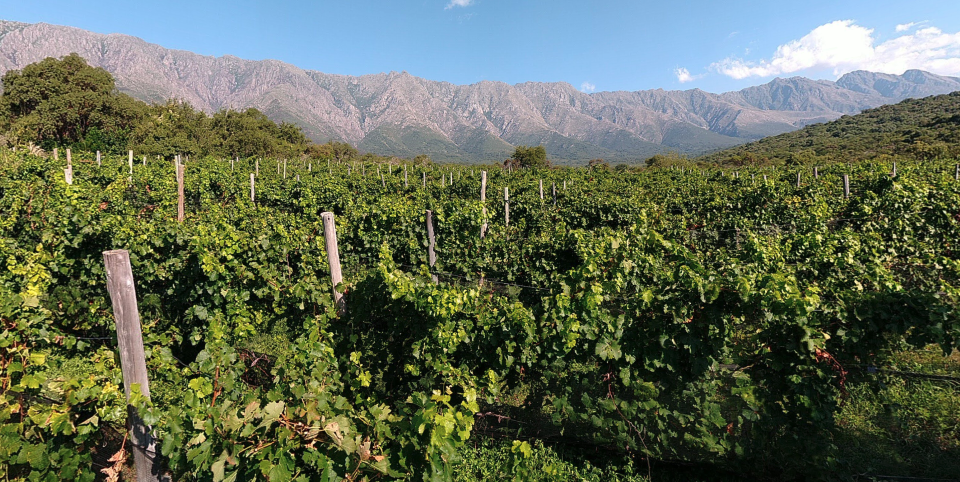
Uno de los viñedos más vistosos en Traslasierra, Córdoba, en el corazón geográfico de Argentina pertenece a Achala Wines. Las Sierras Altas (al fondo en la foto) son una formación antiquísima que aportan granitos y gneis meteorizados con vetas calcáreas en la formación de suelos. El viñedo convive con el espinoso bosque nativo.
En el norte el paisaje es de otro planeta. En las laderas conviven cardones con terrazas precolombinas donde hoy se cultiva la vid. Si el Valle Calchaquí es el epicentro de la actividad vínica a lo largo del siglo XX (da cuenta de unas 4200 hectáreas de vid), la Quebrada de Humahuaca, que trepa hasta Bolivia, hoy es la zona donde un puñado de inversores están desarrollando viñedos, con incipientes plantaciones que alcanzan las 60 hectáreas.
Los Valles Calchaquíes, sin embargo, definen la lógica de la región. Donde quiera que haya agua, hay vid. Cafayate en la provincia de Salta es el centro neurálgico, que concentra la mayor cantidad de bodegas tradicionales, desde Etchart a Domingo Hermanos y El Esteco. Un apacible pueblo en el que pasar las horas a la sombra, bebiendo tintos potentes y comiendo empanadas o cabritos. Ofrece la mejor hostelería de la zona. Cachi es otro lindo lugar, más colonial y a mayor altura, por cierto. Entre ellos se extiende el río Calchaquí a través de 160 kilómetros (4 horas de auto debido al camino) y conecta pueblos y viñedos.
Plantado sobre antiguas terrazas precolombinas, el viñedo La Turbina, en las afueras de Cafayate, es único en su especie. Ubicado a más de 2000 metros y con exposición sur, es un lugar fresco donde la Garnacha alcanza otros decibeles.
Los Cabernet Sauvignon del Valle Calchaquí ofrecen potencia y un característico perfume de morrón asado que recuerda al especiero de la zona, seguido de Malbec negros y con perfumes de chutney, también en blancos el perfumado Torrontés (uva nativa pariente de la Moscatel). Algunos de los vinos más interesantes de este reporte, como Colomé 1831 Cabernet Sauvignon 2021 y El Esteco Finca Notables Cabernet Sauvignon 2020 y Malbec Almacén de la Quebrada Pucará Malbec 2020 provienen de la zona.
De Humahuaca, más alto y frío, los tintos tienen una reminiscencia del Ródano norte, con unos exóticos Syrah y Cabernet Franc. Como es una región nueva, los vinos son interesantes, pero menos constantes. Destacan Finca Benavides Sirviñacu Syrah 2021 y Viñedo Huichaira Cielo Arriba 2021. Un paseo por estos lugares de aire delgado a causa de la altura, con cierta sensación de cansancio por las mismas razones, ofrece postales únicas del vino en el mundo. Probarlos es meterse en otra topografía de sabores. Si la elevada intensidad de sabor proviene del sol, la frescura jugosa de algunos vinos nace de la altura. El punto con estas regiones extremas es que la ventana de vendimia para el perfil frutado es muy estrecha. Y algunos productores van sobremaduros para evitar posibles verdores. Los buenos, sin embargo, son finos en ello, como los mencionados.
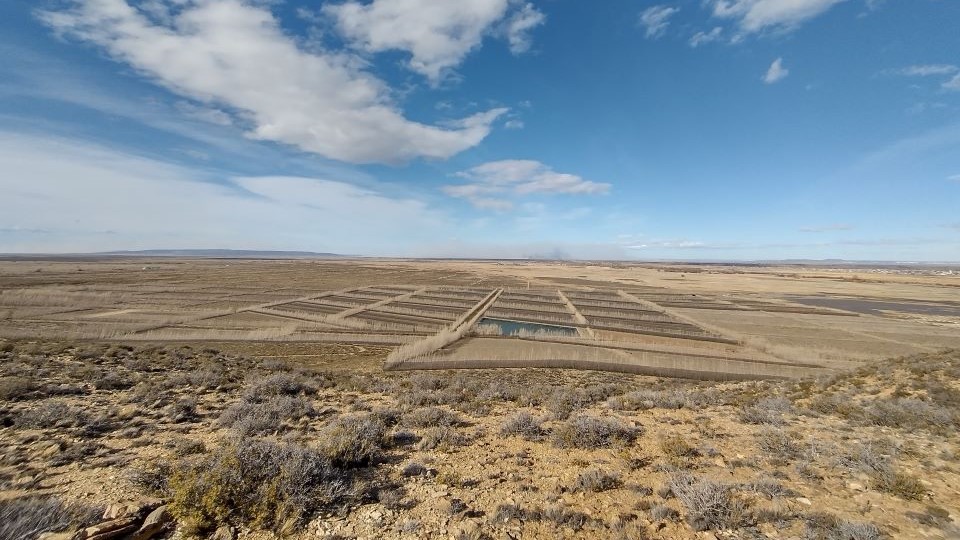
En el gélido mes de agosto, los viñedos de Otronia en la estepa en Chubut soportan vientos de más de 100 kilómetros por hora, por lo que se plantan con cortinas de álamos (hay tantos como vides). En verano, el día alcanza a las 16 horas de sol y no son infrecuentes las heladas en pleno enero.
San Juan
Dentro de la región de Cuyo, la provincia de San Juan es importante en materia de producción de vinos masivos. Con unas 41 mil hectáreas de viña, tiene peso propio en las estadísticas de Argentina. En particular para los vinos tintos y blancos del año, de los que los productores de la región despachan a mediados del invierno austral, a poco de terminar la cosecha.
En San Juan hay dos valles que son importantes en materia de buenos vinos. Pedernal, que metido en la Precordillera suma unas 800 hectáreas de viña a unos 1400 metros de altura, y Calingasta, ya al pie del macizo Frontal, con cumbres de 6 mil metros. El primero ofrece suelos calcáreos puros y destaca por la intensidad y textura tizosa de los vinos, como Pyros Block Vineyard Nº4 Malbec 2019 y Finca Las Moras Demencial Malbec 2021. El segundo, gracias a una altura de 1600 metros, ofrece un perfil frío y solar, con vinos de intensidad y frescura jugosa, como Los Dragones Maida Malbec 2021 y Bodega Del Carmen Nido del Tigre Malbec 2022.
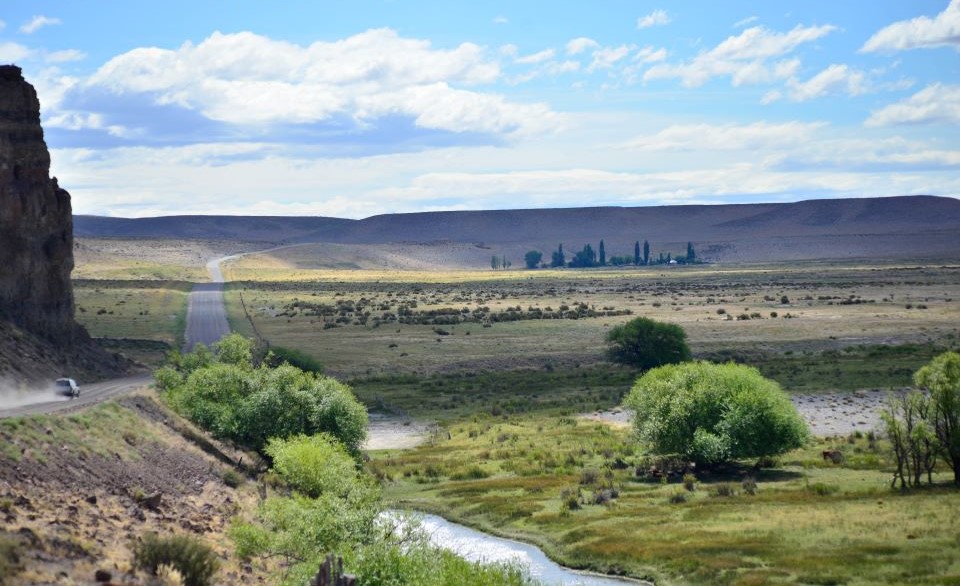
El Río Chubut nace en los andes y serpentea a lo largo de la estepa. La foto corresponde al verano de 2023 y describe el paisaje volcánico y meandroso, con los cerros cincelados por el viento. En estos valles la viticultura es incipiente aún.
Los Valles de la Patagonia
En el extremo austral de Argentina, la Patagonia ofrece viñedos más bajos en altura, ubicados desde el paralelo 39º hasta el 45º. Para entender de qué hablamos cuando hablamos de Patagonia, conviene tener un dato en mente: la región ocupa la mitad de la superficie del país, con una cordillera por el oeste, baja en comparación al resto de Los Andes, boscosa y con glaciares y lagos, y una gran estepa desértica atravesada por grandes ríos. El más importante de ellos, el Río Negro, define también la zona de mayor densidad de viñedos.
En esta área están plantadas unas 3200 hectáreas de viña. Por su latitud, las variedades de ciclo largo están al límite, mientras que la de ciclo medio están a sus anchas: si el Cabernet Sauvignon madura solo algunos años, Merlot, Pinot Noir y Malbec llegan sin problemas. También blancas como Chardonnay y Sémillon ofrecen un perfil distintivo.
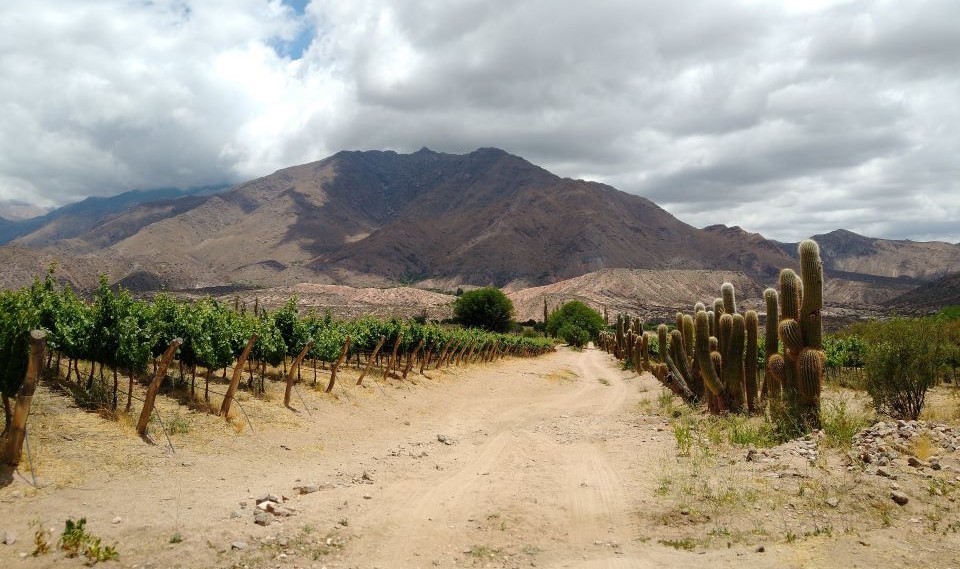
A 2500 metros sobre el nivel del mar, en los valles Andinos, la vid crece en condiciones extremas. Si la naturaleza creó a los cardones (los cactus de la foto) como una planta adaptada a la zona, está claro que la vid da frutos en pleno estrés ambiental, lo que se define como carácter Vallisto en la región.
La razón para que los vinos de la Patagonia Norte –como se conoce a la zona que comprenden las provincias de Neuquén, Río Negro y La Pampa– sean particulares, hay que buscarla en la combinación de suelos arcillosos creados por los ríos, largas horas de sol en verano y clima ventoso. En esas condiciones las uvas maduran lentamente, con hollejos gruesos, y permiten conseguir ventanas de cosecha más precisas. En esta zona manda fruta roja en los tintos, con acideces equilibradas y taninos reactivos y finos. Buenos ejemplos de estos vinos de río son Noemia Malbec 2021, Familia Schroeder Saurus Barrel Fermented Malbec 2022, Chacra Treinta y dos Pinot Noir 2022, y Ribera del Cuarzo Red Blend 2020.
Más al sur, sin embargo, la provincia de Chubut, ofrece un panorama más acotado. Con unas 80 hectáreas de viña plantadas más allá del paralelo 42º y hasta el 45º, es un paisaje de pequeños productores que prueban suerte con Pinot Noir y Chardonnay. Aquí reinan los vinos más esqueléticos y de elevada acidez, con cierto carácter austero, entre los que destaca Contra Corriente en el límite con Chile prácticamente. La excepción está en Otronia, la bodega y viñedo más austral del mundo (a la fecha), que viene a darle escala ya que ella sola da cuenta de 50 hectáreas de vid, en una zona desértica y helada. Un tinto del bosque patagónico es Contra Corriente Pinot Noir 2020, mientras que de la estepa un buen ejemplo es Otronia 45º Rugientes Pinot Noir 2021.
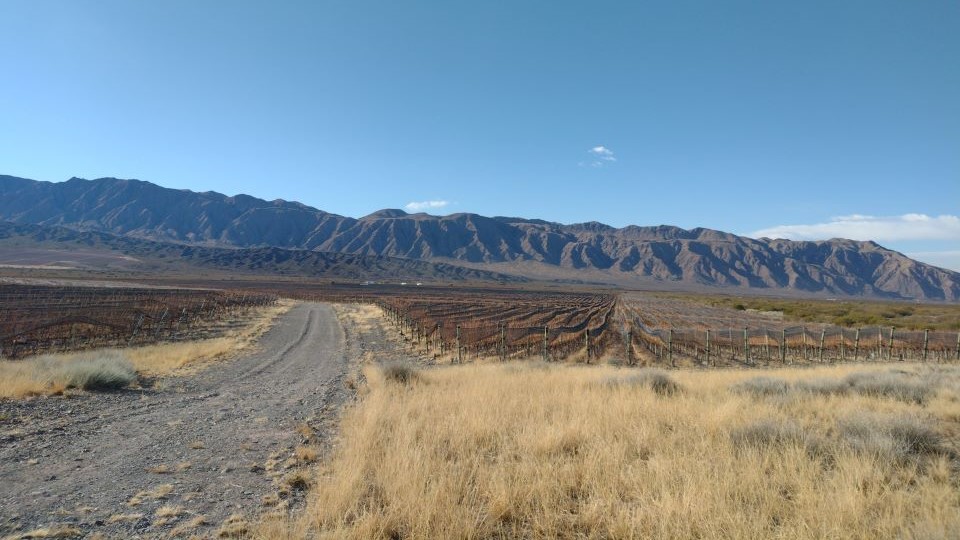
El valle de Pedernal, ubicado en la Precordillera de San Juan y a 1400 metros, es una de las joyas menos conocidas de la región. El cordón de Pedernal, en la foto al fondo, está formado por rocas calcáreas que le confieren al suelo un carácter único entre los viñedos de Argentina. La foto fue tomada en invierno de 2022.
Otros lunares en la geografía
Entre las otras zonas con potencial emergente, dos llevan la voz cantante. Por un lado, Córdoba, en el corazón de la Argentina, comprende 245 hectáreas en un paisaje de serranías que compensan con altura y suelos atípicos en el contexto del país, porque es una región donde la lluvia hace florecer un espinoso bosque nativo. Allí, un puñado de productores empuja la vid con foco en vinos tintos. Destaca en la zona de Traslasierra Achala Bodega Exótica, cuyo viñedo está poblado de árboles nativos como molles y piquillines. Su Valle de Traslasierra Blend 2021 bien describe ese paisaje.
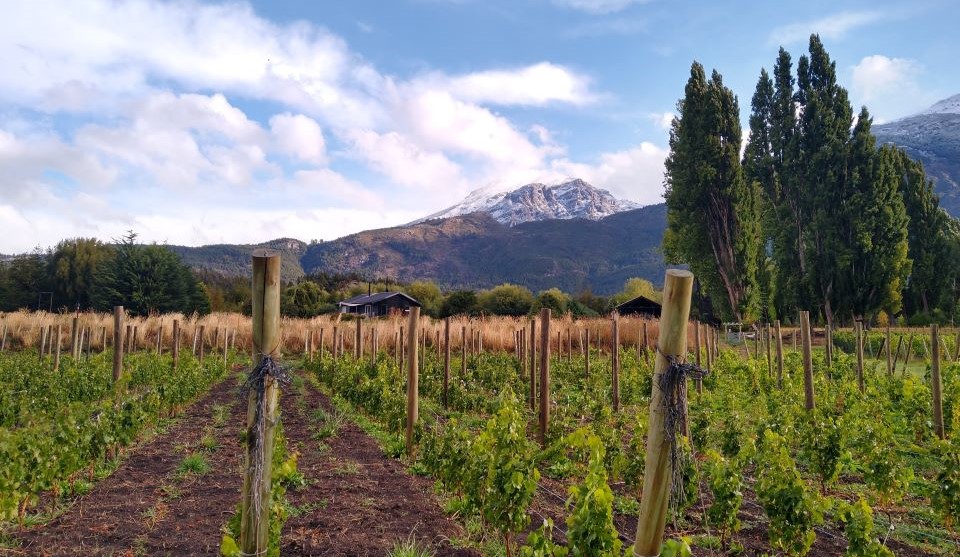
El Valle del Río Futaleufú, en el límite con Chile, ofrece un puñado de viñedos plantados en la Patagonia verde. Es una zona fría, en el límite del cultivo para la vid. La foto, de hecho, fue tomada en marzo 2021 al cabo de una nevada en los cerros.
Por otro lado, los viñedos oceánicos, plantados al sur de la provincia de Buenos Aires y el este de la provincia de Río Negro y Chubut. Este año probé algunos vinos de Balcarce y Chapadmalal, pero hay muchos pequeños lunares de viña en una franja costera de unos 100 km del mar. La costa bonaerense es una zona ventosa en la que pueden llover más de mil milímetros por año, y en donde el Atlántico define un lugar entre frío y fresco en el que las blancas reinan. Chardonnay, Sauvignon Blanc y Alvariño ofrecen ejemplos vibrantes y de otro matiz, menos concentrado, respecto de los que provienen de Los Andes. Puerta del Abra Insólito Alvariño 2022 es una buena copa. Es en tintos, sin embargo, donde el perfil es más atrevido aún. Conviene probar Trapiche Costa y Pampa Pinot Noir 2022, Wapisa Malbec 2022 y Puerta del Abra Cabernet Franc 2020 son buenos ejemplos para descubrir un perfil menos típico de Argentina.
No todos estos paisajes son fáciles de encontrar en mercados como el norteamericano, muchas veces porque las producciones son pequeñas, otras porque los importadores no se aventuran tan lejos. Cualquiera sea el caso, una cosa es segura: puestos a imaginar un viaje por el extremo sur del continente, algunas de estas botellas son la excusa perfecta para subirse al avión. Al fin de cuentas, viajar también es abrir la caja de lo inesperado.
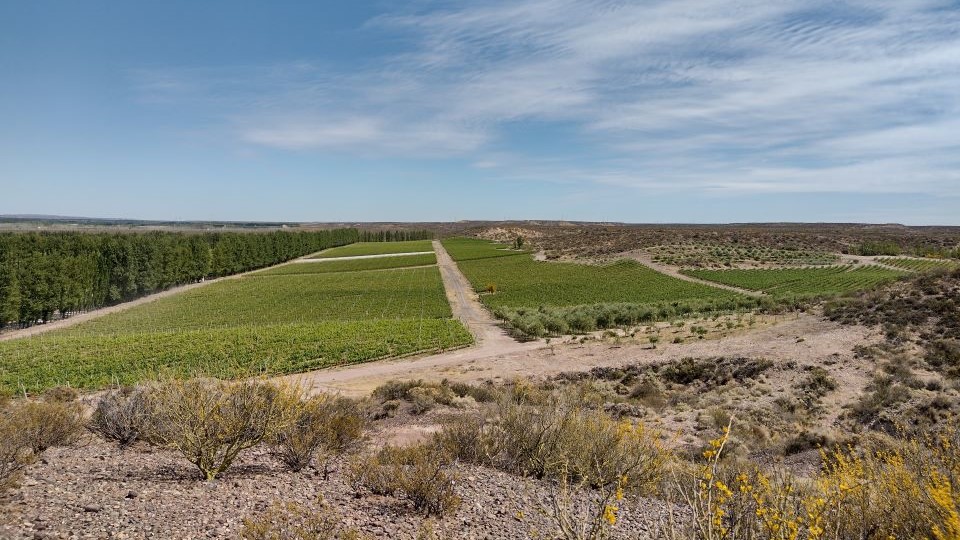
En San Patricio del Chañar, en Neuquén, las vides trepan a las bardas (los taludes) del río Neuquén. De esta forma, como sucede en este viñedo de Familia Schroeder, exploran desde suelos de arcilla en el fondo a gravas calcáreas como los de la zona lindante con el desierto.
Todos los vinos de este reporte fueron catados en noviembre de 2023 en Buenos Aires.
© 2024, Vinous. Ninguna parte de este artículo puede ser copiada, compartida o redistribuida sin el consentimiento previo de Vinous. Si se incurriese en ello, no solo se viola nuestro copyright, sino que también se amenaza la supervivencia de la crítica independiente de vinos.
También Podrías Disfrutar
Valle de Uco: cuando la diversidad del terroir hace la magia, joaquín Hidalgo, septiembre 2023
La Era de los Blancos de Montaña: Degustar la Altura, Joaquín Hidalgo, julio 2023
Cosecha 2023 en Argentina: el Año en que se Quemaron los Manuales, Joaquín Hidalgo, mayo 2023
Luján de Cuyo, Viñas Viejas y un Mosaico de Suelos, Joaquín Hidalgo, enero 2023
Show all the wines (sorted by score)
- 907 Wines
- Abras
- Achala Bodega Exótica
- Agustín Lanús Wines
- Alandes
- Amalaya
- Aniello
- Antropo Wines
- Bodega Colomé
- Bodega del Carmen
- Bodega del Fin del Mundo
- Bodega Domingo Molina
- Bodega Gamboa
- Bodega Kindgard
- Bodega Malma
- Bodega Michango
- Bodega Miras
- Bodega Puerta del Abra
- Bodega Ribera del Cuarzo
- Bodegas Etchart
- Bodega Tierra de Volcanes
- Catena Family Wines
- Chacra
- Chañarmuyo
- Contra Corriente
- CrowdFarming.Wine
- Dominio de la Freneza
- Durigutti Family Winemakers
- El Esteco
- El Porvenir de Cafayate
- El Viticultor
- Estancia Los Cardones
- Fabre Montmayou
- Familia Delmotte
- Familia Schroeder
- Finca Benavidas
- Finca Las Moras
- Francisco Puga y Familia
- Huichaira Vineyards
- Humberto Canale
- Juan Camuñas
- Los Dragones
- Matervini
- Munay
- Noemía
- Otronia
- Piattelli Vineyards
- Piloto Wines
- Putruele
- Pyros Wines
- Sueños de la Quebrada
- Trapiche
- Viñedos Yacoraite
- Wapisa

